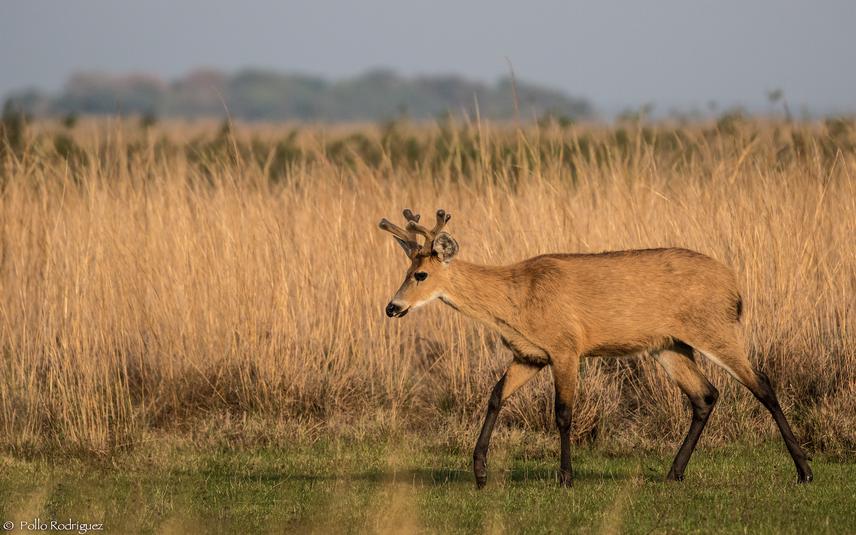Paula Blanco
The marsh deer, Blastocerus dichotomus, is the biggest cervid of South America, globally classified as Vulnerable by the International Union for the Conservation of Nature and the Red List of mammals of Argentina. Formerly widespread throughout much of the subtropical and humid temperate area of Argentina, today it is reduced to isolated populations in the areas of estuaries and lagoons associated with the basins of the Paraná and Paraguay rivers. Marsh deer mortality events have been recorded in wetlands of this country, where protected areas and productive fields coexist. Latest studies revealed the multifactorial origin of mortality events, in which adverse climatic conditions and infectious diseases are associated. However, the role of environmental contaminants in these events and how pesticides affect health parameters in deer remains unknown. Argentina's economic model is strongly based on agricultural activity, which in turn depends on the application of a great variety of pesticides. Recent studies in wetlands showed that frequently used pesticides tend to bioaccumulate in plants and animal tissues. Within the framework of a Participatory Surveillance Network (PSN) that includes researchers, decision makers, rescue centers, veterinarians, park rangers and local community; we aim to create an ecotoxicological database to improve the approach to mortality events and contribute to management strategies of protected areas.

Marsh Deer in a marshy region of Iberá National Park. © Pollo Rodriguez.
Several environmental matrices such as water, soil, sediment and vegetation will be sampled to perform laboratory detection of pesticide residues. This project is the initial step for the creation of an ecotoxicological database, a necessary piece in the comprehensive approach of mortality episodes of marsh deer and a key tool for the development of management strategies that allow the creation of concrete agreements with local producers, the design of buffer zones and/or the implementation of environmental restoration techniques.
Header: Pine afforestation and resin extraction in the adjacent area to Iberá National Park. © Cecilia I. Sosa.